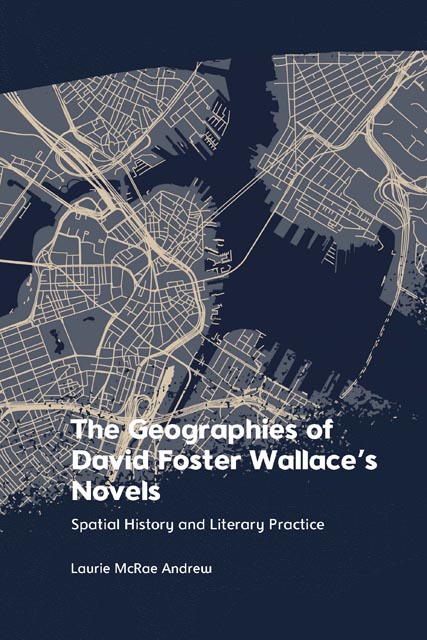Book contents
- Frontmatter
- Contents
- Acknowledgements
- Texts and Abbreviations
- Introduction
- 1 ‘This strange, occluded place’: Regional Geography, the Midwest and The Broom of the System
- 2 ‘Abroad in the urban night’ (I): Metropolis, ‘Postmetropolis’ and Infinite Jest
- 3 ‘Abroad in the urban night’ (II): Empathy, Community and the Image of the City in Infinite Jest
- 4 What is Peoria for? (I): Postindustrial Life and the Language of Place in The Pale King
- 5 What is Peoria for? (II): Peoria, the Edge City and The Pale King
- Bibliography
- Index
4 - What is Peoria for? (I): Postindustrial Life and the Language of Place in The Pale King
Published online by Cambridge University Press: 13 April 2023
- Frontmatter
- Contents
- Acknowledgements
- Texts and Abbreviations
- Introduction
- 1 ‘This strange, occluded place’: Regional Geography, the Midwest and The Broom of the System
- 2 ‘Abroad in the urban night’ (I): Metropolis, ‘Postmetropolis’ and Infinite Jest
- 3 ‘Abroad in the urban night’ (II): Empathy, Community and the Image of the City in Infinite Jest
- 4 What is Peoria for? (I): Postindustrial Life and the Language of Place in The Pale King
- 5 What is Peoria for? (II): Peoria, the Edge City and The Pale King
- Bibliography
- Index
Summary
Introduction: The Pale King and the Changing Geography of Work
What is Peoria for? The question does not appear in the published text of The Pale King, compiled by Michael Pietsch from the mass of draft material Wallace left on his death in 2008. But it does appear, with almost obsessive frequency, in the margins of notebooks and drafts from the earliest to the last stages of Wallace’s work on the project. The extensive ‘Evidence’ notebook, whose inside cover is dated ‘3/96’ (a month after the publication of Jest), is replete with instances (HRC 43.1). Nearly ten years later, Wallace labelled a zip disk containing draft material ‘WPF/PK 05’ (according to Pietsch’s index of materials, kept in the Harry Ransom Center archive), giving the question of (w)hat (P)eoria is (f)or equal weight alongside the eventual title of the published text (HRC 36.0). In between, numerous drafts and notebooks are headed or annotated with the question. In his extensive treatment of the archival material related to the novel, David Hering identifies a three-stage compositional history: an initial stage running from 1996 to 1999, a second phase from 1999 to 2005, and a third period from 2005 to 2007, with each bookended by a fundamental rethinking of direction. But the persistence of the question of what Peoria is for suggests that this guiding concern with the function of place – in America at the turn of the twenty-first century, and in the novel itself – remained at the centre of Wallace’s project throughout this troubled process.
This concern is also signalled in Wallace’s conversation with David Lipsky in 1996, where it takes on an explicitly economic inflection. Showing Lipsky around Bloomington-Normal, Illinois – where he settled in 1993 – Wallace took pains to outline features of the local economy: ‘there’s a Mitsubishi plant, and then there’s a lot of farm-support stuff. There’s a lot of firms called like Ro-tech and Anderson Seeds. And State Farm Insurance.’ That this material frame was important to Wallace’s work on the novel is indicated by his frequent compilation of detailed lists of imagined industries and services with which to populate his version of Peoria: the ‘Evidence’ notebook contains several notes for invented manufacturing and extractive concerns, like ‘Frigid Coal Inc.’ and ‘Midwest Foam’ – a ‘place that makes foam insulation, rubber foam’ (HRC 43.1).
- Type
- Chapter
- Information
- The Geographies of David Foster Wallace's NovelsSpatial History and Literary Practice, pp. 142 - 180Publisher: Edinburgh University PressPrint publication year: 2022



